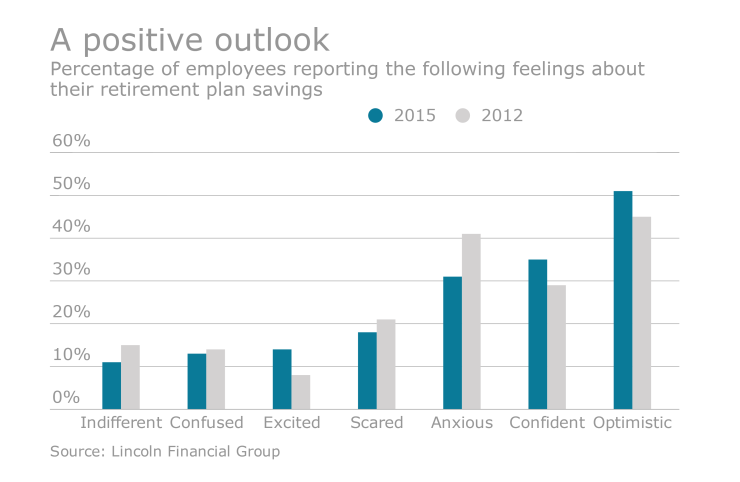There’s a big disconnect between companies that say they support older employees who want to retire later and those that actually offer programs that help them remain in the workforce.
Catherine Collinson, CEO and president of Transamerica Institute and its Transamerica Center for Retirement Studies, says that nearly three-quarters of employers consider themselves to be “aging-friendly” by offering opportunities, flexible work arrangements, and training and tools needed for employees of all ages to succeed.
But only 39% of employers offer flexible schedules to pre-retirees, and even fewer allow pre-retirees to change from full-time to part-time positions or take on less stressful or demanding jobs with the company, according to new Transamerica research. Meanwhile, just 27% of employers encourage pre-retirees to participate in succession planning, training and mentoring before they leave the company.
Lack of help isn’t due to a lack of awareness, either: The majority of employers (72%) believe that many of their workers expect to work past 65 or not retire at all.

“Very few employers have business practices in place to support them,” Collinson says. “That is an area of tremendous opportunity.”
In its latest employer survey, Transamerica finds that 27% of employers cited employment-related reasons for an employee’s retirement, including organizational changes, meaning they were laid off or terminated or they took a retirement buyout or incentive.
“Employers are aware of the need, supportive of the need, yet the figures don’t lie as we look at the labor force participation rate among older workers and the reasons employers indicated employees recently retired,” Collinson says. “They may not be as aging-friendly as they think they are.”
What employers can do to help
Collinson says that workers of all ages hope for some type of personalized, phased or flexible transition period, either through a reduction in hours or by moving to another, less intense position.
Offering pre-retirees flexibility is a win-win for employees and employers, she adds. It helps employers with succession planning and workforce optimization. Many times, retirees leave without ever having the opportunity to train their successors. That is a major loss of institutional knowledge, Collinson says. If retirement ends up being an all-or-nothing proposition, it doesn’t allow for a seamless continuation of business operations.
“It’s hard to understand why employers aren’t doing this,” she says. “In my travels and in my conversations, it just isn’t on their radar. Some workers are recovering from the Great Recession and the same applies to employers as well. Many are focused on their businesses, stabilizing and growing their businesses. They are not in the luxurious situation yet to determine how they can enhance their employee benefits or offer phased retirement.”
Many employers are afraid to even mention phased retirement for fear of potential liability. They don’t want to be accused of age discrimination, she says. That’s where benefits consultants and policymakers can work together to identify the true impediments and address them through public policy and benefits design.
Employers don’t just have to sit on their hands and do nothing, however. Collinson encourages employers to adopt a diversity and inclusion policy statement that includes age along with other demographic factors, such as race and religion. Creating a statement like this will encourage employers to think through the implications of what it means to include age as a factor in their planning.
Employers say that employees can help themselves as well by maintaining good health and keeping their job skills up-to-date.
In today’s very competitive business environment, it’s essential that employees continue to learn and grow in their positions and not become complacent, Collinson says. Many employers can help by offering training sessions or by offering to foot the bill for educational training courses.





